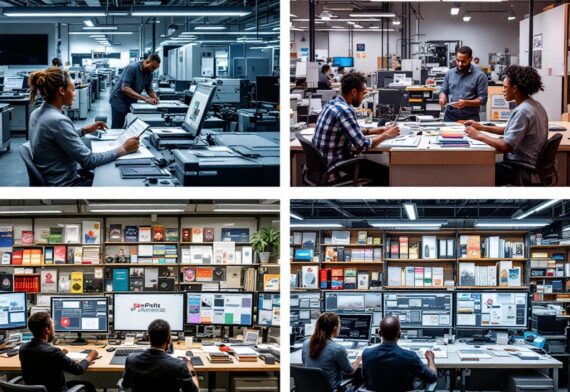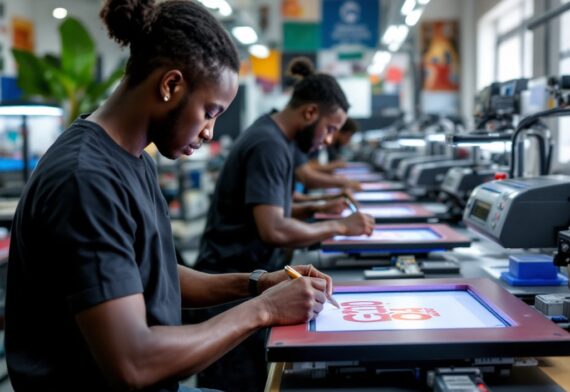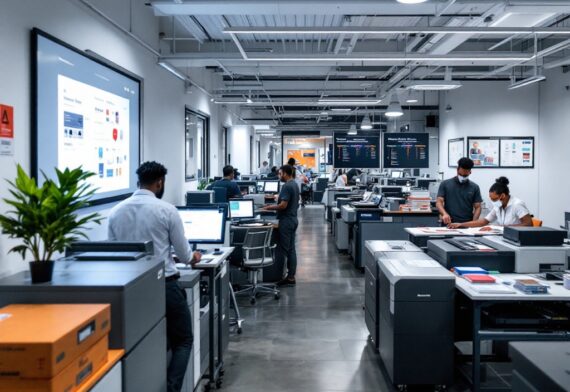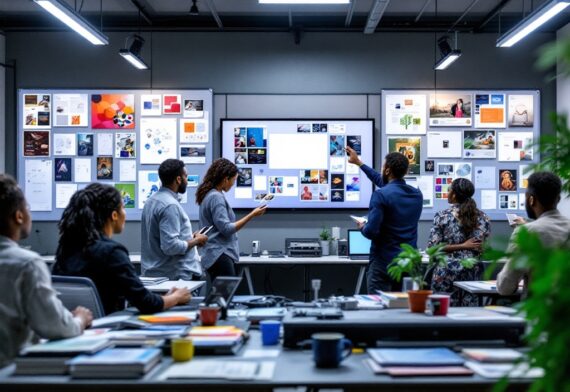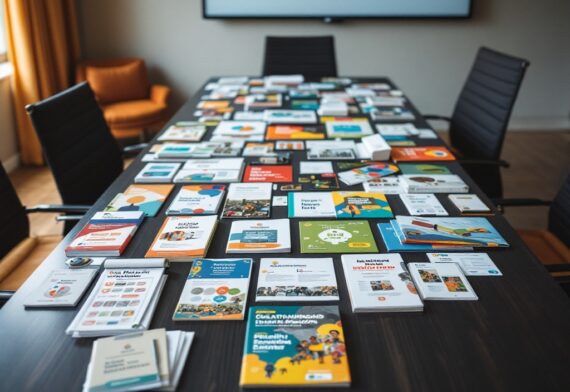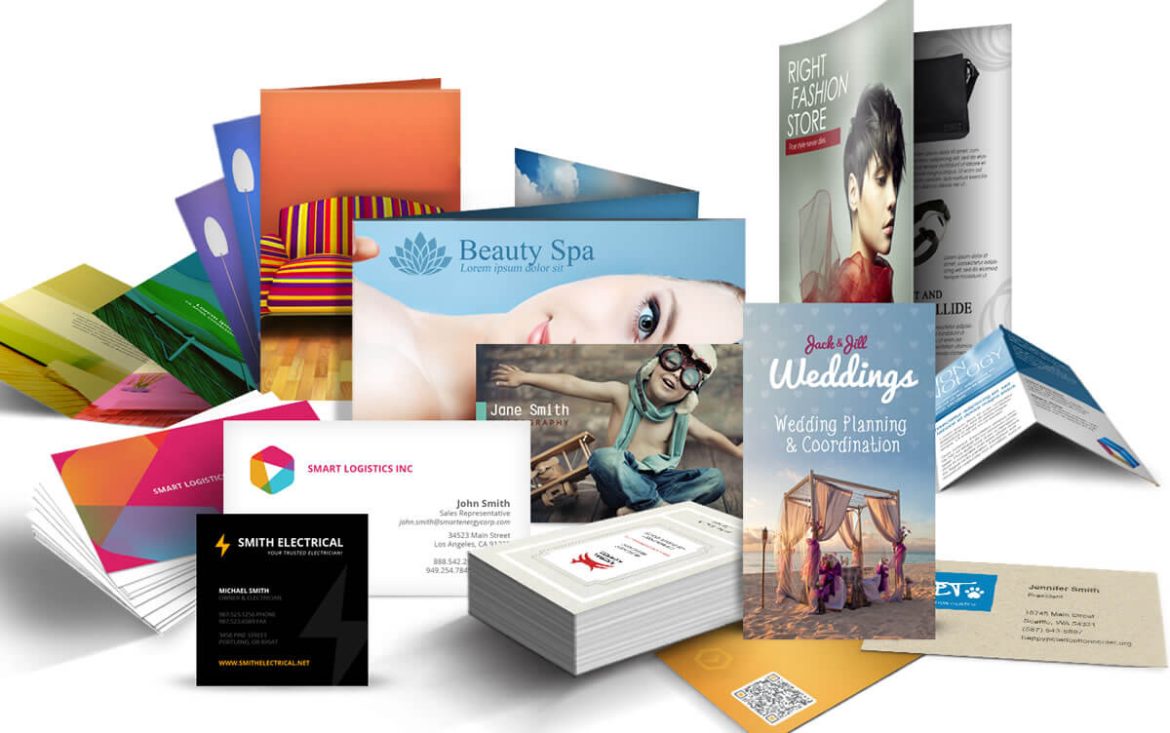
In today’s competitive market, businesses need effective tools to capture attention and communicate their message. One such tool is the humble flyer. Flyers are cost-effective, versatile, and can be used for a wide range of marketing activities, from announcing a new product to promoting a sale or event. However, not all flyers are created equal. The success of a flyer campaign largely depends on its design and print quality.
At SpeedPrints Ghana Ltd., we have been helping businesses create impactful flyers since 2015. As a one-stop printing service, we cater to both the Ghanaian market and international clients, offering flexible solutions that guarantee quality, reliability, and cost-effectiveness. In this blog, we’ll guide you through the process of designing and printing effective flyers that can drive results for your business.
- Understanding the Purpose of Your Flyer
Defining Your Objective
Before you begin designing your flyer, it’s crucial to have a clear objective in mind. Ask yourself what you want to achieve with your flyer. Are you promoting a product, announcing a sale, or inviting people to an event? Your objective will influence the design, content, and distribution strategy of your flyer.
Identifying Your Target Audience
Understanding your target audience is key to creating a flyer that resonates. Consider factors like age, gender, location, and interests. Tailor your message and design elements to appeal directly to this audience, ensuring your flyer speaks to their needs and desires.
- Crafting a Compelling Headline
The Importance of a Strong Headline
Your flyer’s headline is the first thing people will notice, so it needs to grab their attention immediately. A strong headline should be clear, concise, and relevant to your audience. It should also convey the main benefit or message of your flyer.
Tips for Writing Effective Headlines
- Be Specific: Avoid vague statements. Instead, clearly state what you’re offering or promoting.
- Create Urgency: Use words like “limited time,” “exclusive,” or “now” to encourage immediate action.
- Highlight Benefits: Focus on what your audience will gain from your product or service.
- Use Action Words: Encourage action with verbs like “Discover,” “Get,” “Save,” or “Join.”
- Designing the Flyer Layout
Choosing the Right Size and Format
Flyers come in various sizes and formats, from the standard A5 to larger A4 or even custom sizes. The size you choose should align with your objective and distribution method. For example, if you’re distributing flyers in-store, a smaller, more portable size may be preferable. On the other hand, if you’re mailing flyers or using them as posters, a larger format might be more effective.
Creating a Visually Appealing Layout
A well-designed flyer layout is crucial for capturing attention and guiding the reader’s eye through the content. Here are some tips for creating an effective layout:
- Use a Grid System: Organize your content using a grid to ensure alignment and balance.
- Prioritize Key Information: Place the most important information, like the headline and call-to-action, in prominent positions.
- Use White Space: Don’t overcrowd your flyer. White space helps to separate elements and makes the content easier to read.
- Balance Text and Images: Use images and graphics to complement your text, but ensure they don’t overwhelm the content.
- Selecting the Right Colors and Fonts
Understanding Color Psychology
Colors play a significant role in how your flyer is perceived. Different colors evoke different emotions and can influence the effectiveness of your flyer. For example:
- Red: Evokes urgency and excitement, making it ideal for sales or promotions.
- Blue: Conveys trust and professionalism, suitable for corporate or financial services.
- Green: Represents growth and sustainability, perfect for eco-friendly products or services.
Choosing Fonts Wisely
Fonts are another critical aspect of your flyer design. The right font can enhance readability and reinforce your brand identity. Here are some tips for choosing fonts:
- Use Readable Fonts: Choose fonts that are easy to read, even from a distance. Avoid overly decorative fonts that may be hard to decipher.
- Limit Font Varieties: Stick to two or three fonts to maintain a cohesive look. Use different weights or styles (e.g., bold, italic) to create hierarchy and emphasis.
- Match Your Brand: Ensure that your font choice aligns with your brand’s personality and the message you want to convey.
- Incorporating High-Quality Images and Graphics
The Power of Visuals
Images and graphics are powerful tools for capturing attention and conveying your message quickly. High-quality visuals can make your flyer more attractive and memorable. However, it’s important to choose images that are relevant to your content and resonate with your target audience.
Tips for Using Images and Graphics
- Use High-Resolution Images: Ensure all images are high-resolution (300 DPI) to avoid pixelation when printed.
- Keep it Relevant: Choose images that directly relate to your product, service, or event.
- Avoid Stock Overload: While stock images can be useful, try to incorporate original photos or custom graphics to stand out.
- Use Icons and Illustrations: These can be effective for highlighting key points or adding visual interest without overwhelming the design.
- Writing Persuasive Copy
Crafting the Message
The text on your flyer needs to be clear, concise, and persuasive. It should quickly convey the value of your offer and guide the reader toward taking action. Here’s how to write compelling copy:
- Focus on Benefits: Instead of just listing features, highlight the benefits your audience will experience.
- Keep it Concise: Flyers don’t have much space, so make every word count. Use short sentences and bullet points to convey information efficiently.
- Use a Conversational Tone: Write as if you’re speaking directly to your audience. This makes your message more relatable and engaging.
- Include a Strong Call-to-Action (CTA): Your CTA should be clear and compelling, encouraging the reader to take the next step, whether it’s visiting your website, calling your business, or attending an event.
Tips for Effective CTAs
- Be Direct: Use straightforward language that tells the reader exactly what to do.
- Create Urgency: Encourage immediate action with phrases like “Act Now,” “Limited Time Offer,” or “Reserve Your Spot Today.”
- Highlight the Benefit: Reinforce what the reader will gain by taking action, such as “Get 20% Off” or “Join Our Free Workshop.”
- Ensuring Print Quality
Choosing the Right Paper
The paper you choose for your flyer can significantly impact its overall look and feel. Consider the following factors when selecting paper:
- Weight: Heavier paper (measured in GSM) feels more substantial and conveys quality. Lighter paper is more affordable and suitable for mass distribution.
- Finish: Glossy finishes enhance colors and make images pop, while matte finishes offer a more subtle, sophisticated look.
- Sustainability: Consider eco-friendly options like recycled paper to appeal to environmentally conscious consumers.
Working with a Professional Printer
To ensure your flyer looks professional and polished, it’s essential to work with a reputable printer. At SpeedPrints Ghana Ltd., we offer a range of printing options, including digital and offset printing, to suit your specific needs. We also provide guidance on paper selection, finishes, and other details to help you achieve the best results.
- Printing Techniques for Flyers
Digital Printing
Digital printing is ideal for small to medium print runs and offers quick turnaround times. It’s also cost-effective for short runs and allows for easy customization. Digital printing is perfect for flyers that require vibrant colors and sharp images.
Offset Printing
Offset printing is the go-to choice for large-volume flyer printing. It delivers consistent, high-quality results with precise color matching. While setup costs are higher, the cost per unit decreases with larger print runs, making it a cost-effective option for mass distribution.
- Distribution Strategies for Your Flyers
Hand-to-Hand Distribution
One of the most effective ways to distribute flyers is through hand-to-hand distribution. This method allows you to target specific locations where your audience is likely to be, such as shopping centers, events, or busy streets.
Door-to-Door Distribution
Delivering flyers directly to homes or businesses can be highly effective, especially for local promotions. Ensure your flyer design is eye-catching and clearly communicates your offer, as recipients may only glance at it briefly.
In-Store Distribution
Place flyers in your store or at the point of sale to attract the attention of customers who are already interested in your products or services. You can also include flyers in shopping bags or with purchase receipts.
Mail Distribution
Direct mail is another effective way to reach your target audience. By sending flyers directly to your customers’ mailboxes, you ensure that your message is delivered straight to their hands. Personalized flyers with a specific offer or call-to-action can enhance engagement.
Digital Distribution
While traditional flyer distribution is effective, don’t overlook the power of digital channels. You can share a digital version of your flyer on social media, via email, or on your website. This extends your reach and allows for easy sharing among your audience.
- Measuring the Success of Your Flyer Campaign
Setting Clear Goals
Before launching your flyer campaign, set clear, measurable goals. This could include the number of leads generated, foot traffic to your store, or website visits. Having specific goals will help you assess the effectiveness of your campaign.
Tracking Responses
Include a way to track responses to your flyer, such as a unique discount code, a QR code, or a dedicated landing page. This will help you monitor the campaign’s performance and gather valuable data on customer behavior.
Analyzing the Results
After your campaign ends, analyze the results to determine its success. Compare the data against your goals and identify any areas for improvement. This will help you refine your approach for future flyer campaigns.
Conclusion
Designing and printing effective flyers requires careful planning and attention to detail. From understanding your target audience to crafting a compelling message and choosing the right distribution strategy, every step plays a crucial role in the success of your campaign.
At SpeedPrints Ghana Ltd., we’ve been helping businesses create impactful flyers since 2015. Our expertise in flyer design and printing, combined with our commitment to quality, reliability, and cost-effectiveness, makes us the ideal partner for your marketing needs. Whether you need digital printing, offset printing, or a custom solution, we’re here to bring your vision to life.
Contact SpeedPrints Ghana Ltd. today to start creating flyers that not only capture attention but also drive results for your business. With our flexible printing solutions, you can be confident in the quality and effectiveness of your marketing materials.

